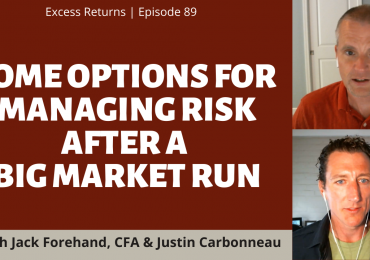In his bi-weekly Hot List newsletter, Validea CEO John Reese offers his take on the markets and investment strategy. In the latest issue, John looks at the issue of diversification and the performance of different-sized portfolios that he runs on Validea.com.
Excerpted from the May 11, 2012 issue of the Validea Hot List newsletter
No one — not Warren Buffett or Peter Lynch or David Tepper — is right on every single stock pick. And when you are wrong, you don’t want the losers to take down the rest of the portfolio with them. So the question, then, is how many stocks is enough — and how many stocks is too much. You want enough stocks in your portfolio to diversify away stock-specific risk, but you don’t want so many that you water down the portfolio and end up putting money into your, say, 150th-best idea.
And that — putting money into the 150th-best idea — is what most mutual funds do. In fact, average mutual funds hold close to 200 stocks, according to a study from investment research firm Morningstar. That’s despite the fact that there’s evidence showing that you can achieve good diversification in portfolios of much, much smaller size. In my book, The Guru Investor, I looked at a 2003 study performed by California State University-Chico Professor H. Christine Hsu and H. Jeffrey Wei, for example. They found that “the benefit of risk diversification is somewhat limited when the number of stocks in the portfolio goes beyond 50.”
Another study, from Morningstar, looked at how focused funds (those with no more than 40 stocks) fared compared to those 200-stock mutual funds. Discussing the study’s findings in late 2009, The Wall Street Journal’s Larry Light wrote that “as a group, these [focused] funds haven’t consistently outperformed or underperformed funds with more diverse holdings. [And] based on recent performance and an earlier Morningstar study, concentrated funds aren’t more volatile than more diversified funds, on average, and some are surprisingly steady despite their small number of holdings.” It shouldn’t be a surprise, then, that many of the top-performing fund managers — David Herro, Donald Yacktman, Bruce Berkowitz, to name a few — hold relatively concentrated portfolios.
In my own experience, I’ve found that even a 10-stock portfolio can offer enough diversification. As you probably know, while the 10-stock Hot List portfolio is our flagship portfolio, we also track a 20-stock version. We also track both 10- and 20-stock portfolios for each of my individual Guru Strategies, as well as for the Top 5 Gurus strategy (which selects the same number of stocks from each of five top-performing strategies). We have a good amount of data to learn from, with most of these portfolios now being nearly nine years old.
The data shows that the results in terms of 10-stock portfolio performance versus 20-stock portfolio performance can vary widely from strategy to strategy. For example, the 10-stock Motley Fool portfolio has produced annualized returns of 13.4% over the long haul — far better than the 7.8% annualized return its 20-stock cousin has generated. But the 10-stock Peter Lynch portfolio, on the other hand, has produced a 6.2% return, well below the 13.4% annualized return for the 20-stock version. (All of the performance data here and below is through May 9, 2012.)
On average, however, the results for the 10-and 20-stock portfolios have been remarkably similar over the long term. The fourteen 10-stock portfolios have annualized returns of 8.14% since their inceptions; the fourteen 20-stock portfolios have averaged 8.10%. When you look strategy by strategy, in seven cases the 10-stock version has performed better, while in seven cases, the 20-stock version has performed better.
What’s also very interesting is what we find when we look at the risk for the different size portfolios. (Beta is a measure of volatility, and shows how closely a portfolio tracks the broader market.) For six of the strategies, the 10-stock version has a lower beta. For seven of them, the 20-stock version has the lower beta. (In one case, the betas are the same.) Overall, the fourteen 10-stock portfolios have an average beta of 1.13. The average beta on the fourteen 20-stock portfolios? It’s 1.13. The standard deviations, which measure standalone risk, are higher on the 10 stocks portfolios on average, though. So the 10 stock portfolios have been more risky on a standalone basis, but not more risky when considered as part of a diversified portfolio.
As for the Hot List itself, its 10-stock version has outperformed the 20-stock version over the long haul, producing annualized returns of 10.9% versus 9.6% for the larger portfolio. It’s done so with almost exactly the same beta (1.19 for the 10-stock and 1.18 for the 20-stock), and its worst year was actually better than the worst year for the 20-stock version (2008, when the 10-stock fell 35.0% and the 20-stock lost 38.9%). And it may be worth noting that the other multi-strategy approach we track, the Top 5 Gurus strategy, has produced much better results over the long term with its smaller portfolio. The 10-stock version has averaged 13.8% annualized returns, while the 20-stock version has averaged 8.7%. The 10-stock version also has a lower beta than the 20-stock portfolio (1.07 to 1.09), and it lost significantly less in its worst year (31.0%) than the 20-stock portfolio lost in its worst year (39.1%).
In the short term, running a 10-stock focused portfolio like the Hot List means additonal volatility on a standalone basis and that a big loss on an individual position will of course be felt more than it would in a larger portfolio. But our data shows that investors who can stay the course through that volatility will be rewarded with better returns over time.
There will be situations in which a 20-stock or 50-stock portfolio does add beneficial additional diversification versus a 10-stock portfolio. But what’s also key here, I believe, is the nature of the Hot List’s underlying approach. Its rigorous, fundamental-based stock selection system puts companies through a wide array of financial strength and valuation tests. Because it looks at companies and stocks from so many angles, it does a good job avoiding questionable companies and risky stocks. Its focus on quality may thus allow it to function quite well in a 10-stock format when other less-rigorous methods might require somewhat larger portfolios. (The performance of the multi-strategy Top 5 Gurus approach also lends credence to this notion.)
While you can never fully ensure that a stock you buy won’t turn into a big loser, using a comprehensive, rigorous system like the Hot List should help you significantly limit the amount of times that occurs. In fact, since its inception in July 2003, only 11 of the Hot List’s hundreds and hundreds of picks have lost 40% or more. (Five of those came during the financial crisis in late 2008/early 2009, which was a historically bad period for stocks as a whole. And one of them — Ascena Retail Group — lost about 40%, but rejoined the portfolio a couple months later and gained over 70% in its second go-round, making up all the ground it lost.) A system like this should also help you find more winners than losers over the long haul, and put you far ahead of the broader market. That’s what the Hot List has done for nearly nine years now, and I expect that to continue.







